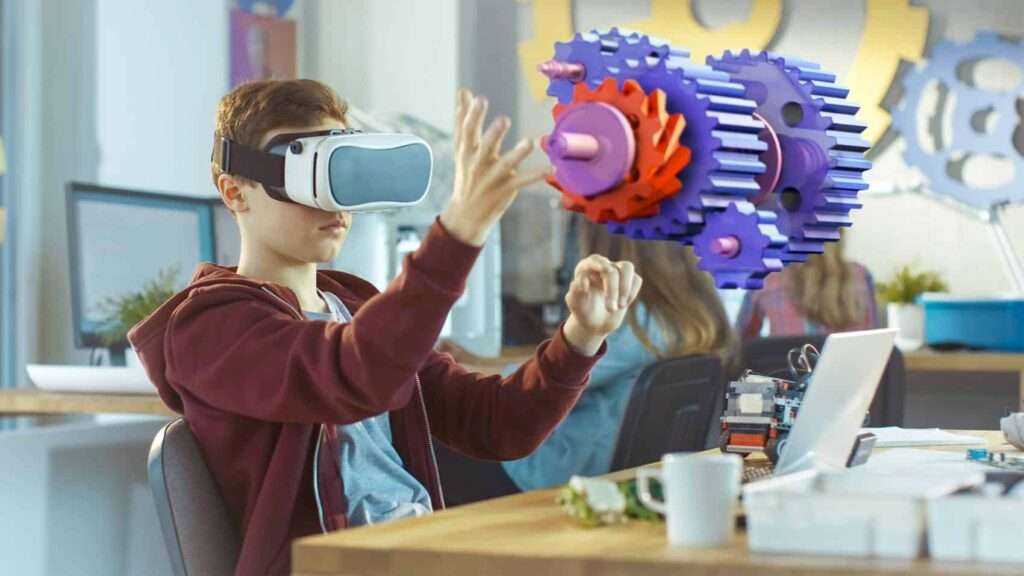Virtual Reality or VR, is a technology that has been around for several years, but has gained significant popularity recently due to advancements in hardware and software. VR refers to a simulated environment that can be experienced through the use of a VR headset, which tracks the user’s movements and adjusts the display accordingly.
VR has the potential to revolutionize several industries, from gaming to healthcare to education. In this blog, we will explore the basics of VR technology, its applications, and its future potential.
How does VR work?

VR works by creating a simulated environment that is immersive and interactive. This is achieved through the use of a VR headset, which includes a screen or screens that are positioned in front of the user’s eyes, and sensors that track the user’s movements. The headset is often connected to a computer or gaming console, which runs the software that generates the virtual environment.
The virtual environment can be generated in several ways, including through computer-generated graphics, 360-degree videos, or a combination of both. The software takes into account the user’s movements and adjusts the display accordingly, so that the user feels like they are actually in the virtual environment.
-: Applications of VR :-
Gaming: Gaming is one of the most obvious applications of VR technology. VR gaming allows users to fully immerse themselves in a virtual world and interact with it in a way that is not possible with traditional gaming. VR gaming has come a long way in recent years, and now includes a wide range of genres, from first-person shooters to puzzle games to sports simulations.
Education: VR has the potential to revolutionize education by providing students with immersive and interactive learning experiences. For example, VR can be used to simulate historical events, scientific experiments, or even foreign language immersion.
Healthcare: VR is being used in healthcare to provide patients with immersive and interactive therapy experiences. For example, VR can be used to treat phobias, post-traumatic stress disorder (PTSD), and even chronic pain.
Real estate: VR is being used in real estate to provide potential buyers with immersive tours of properties. This allows buyers to experience a property as if they were actually there, without having to physically visit the property.
-: Future potential of VR :-
The potential of VR is still largely untapped, and there are several areas where it could have a significant impact in the future.
For example:
Remote work: With more people working remotely, VR could provide a more immersive and interactive way for teams to collaborate, even if they are not in the same physical location.
Tourism: VR could provide a way for people to experience travel destinations without having to physically travel there. This could have a significant impact on the tourism industry, as it could allow people to experience destinations in a more immersive way.
Conclusion:
VR technology has come a long way in recent years, and its potential applications are vast. From gaming to education to healthcare, VR has the potential to revolutionize several industries. As hardware and software continue to improve, the potential of VR will only continue to grow, and we can expect to see even more innovative uses for this technology in the future.

